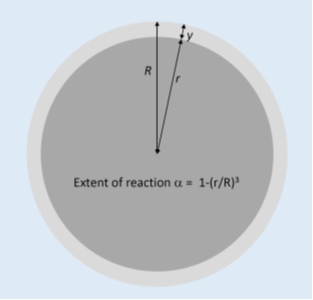On the use of the Jander equation in cement hydration modelling
DOI:
https://doi.org/10.21809/rilemtechlett.2016.13Keywords:
Modeling, Hydration, Shrinking core, Jander equation, Ginstling-Brounshtein equationAbstract
The equation of Jander [W. Jander, Z. Anorg. Allg. Chem. (1927) 163: 1-30] is often used to describe the kinetics of dissolution of solid cement grains, as a component of mathematical descriptions of the broader cement hydration process. The Jander equation can be presented as kt/R2 =[1-(1-α) (1/3) ]2 where k is a constant, t is time, R is the initial radius of a solid reactant particle, and α is the fractional degree of reaction. This equation is attractive for its simplicity and apparently straightforward derivation. However, the derivation of the Jander equation involves an approximation related to neglect of particle surface curvature which means that it is strictly not correct for anything beyond a very small extent of reaction. This is well documented in the broader literature, but this information has not been effectively propagated to the field of cement science, which means that researchers are continuing to base models on this erroneous equation. It is recommended that if the assumptions of diffusion control and unchanging overall particle size which lead to the selection of the Jander equation are to be retained, it is preferable to instead use the Ginstling-Brounshtein equation [A.M. Ginstling, B.I. Brounshtein, J. Appl. Chem. USSR (1950) 23: 1327-1338], which does correctly account for particle surface curvature without significant extra mathematical complication. Otherwise, it is possible (and likely desirable) to move to more advanced descriptions of particle-fluid reactions to account for factors such as dimensional changes during reaction, and the possibility of rate controlling influences other than diffusion.

Downloads
Published
How to Cite
Issue
Section
License
Authors retain copyright of the articles published in RILEM Technical Letters and grant the journal the right of first publication with open access. The work is simultaneously licensed under Creative Commons Attribution 4.0 International License (CC BY 4.0) that allows others to share and adapt the work under the following terms: 1) a proper attribution is given in a form of a reference to the original work's authorship and initial publication in RILEM Technical Letters (bibliographic record with the DOI link); 2) a link to the license is provided; 3) the changes (if any) are indicated.









